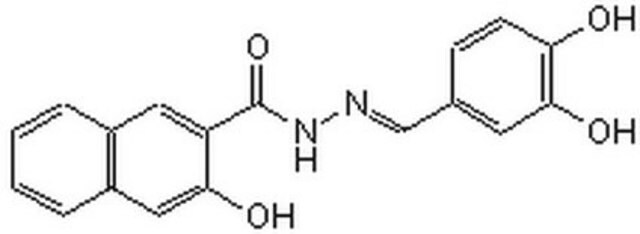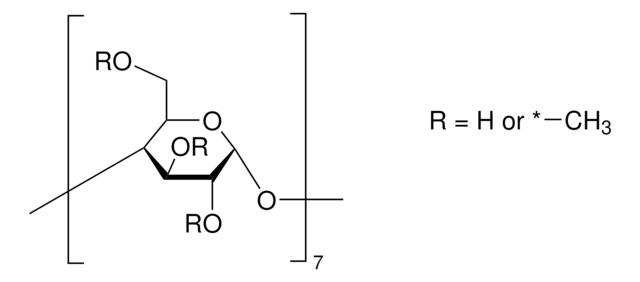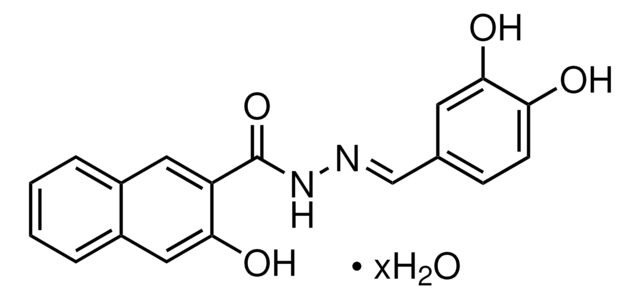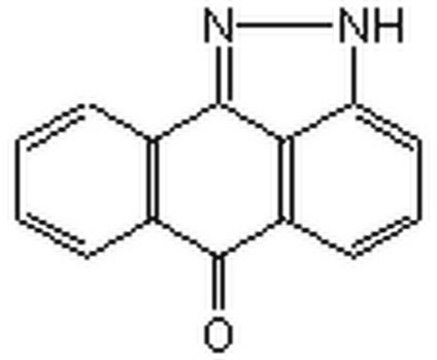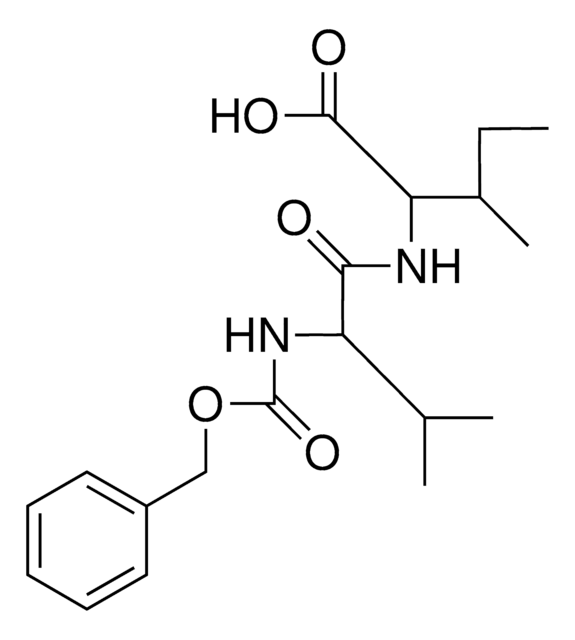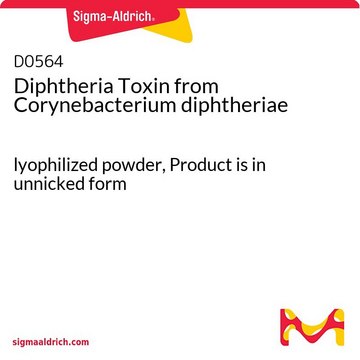SML1006
EGA
≥98% (HPLC)
Sinonimo/i:
2-[(4-Bromophenyl)methylene]-N-(2,6-dimethylphenyl)-hydrazinecarboxamide
Autenticatiper visualizzare i prezzi riservati alla tua organizzazione & contrattuali
About This Item
Formula empirica (notazione di Hill):
C16H16BrN3O
Numero CAS:
Peso molecolare:
346.22
Codice UNSPSC:
12352200
NACRES:
NA.77
Prodotti consigliati
Saggio
≥98% (HPLC)
Stato
powder
Colore
white to beige
Solubilità
DMSO: 5 mg/vial, clear (warmed)
Temperatura di conservazione
2-8°C
Azioni biochim/fisiol
EGA is a small molecule that blocks the entry of anthrax lethal toxin by inhibiting trafficking pathways in acidified endosomes, without affecting endosome pH. EGA blocks trafficking of other toxins, including diphtheria toxin, but does not inhibit trafficking of ricin. The compound EGA attenuates lysosomal targeting and degradation of the EGF receptor, but does not block does not block endosomal recycling of transferrin.
EGA is an inhiitor of endosomal trafficking.
Caratteristiche e vantaggi
This compound is a featured product for Cyclic Nucleotide research. Click here to discover more featured Cyclic Nucleotide products. Learn more about bioactive small molecules for other areas of research at sigma.com/discover-bsm.
Codice della classe di stoccaggio
11 - Combustible Solids
Classe di pericolosità dell'acqua (WGK)
WGK 3
Punto d’infiammabilità (°F)
Not applicable
Punto d’infiammabilità (°C)
Not applicable
Scegli una delle versioni più recenti:
Certificati d'analisi (COA)
Lot/Batch Number
Non trovi la versione di tuo interesse?
Se hai bisogno di una versione specifica, puoi cercare il certificato tramite il numero di lotto.
Possiedi già questo prodotto?
I documenti relativi ai prodotti acquistati recentemente sono disponibili nell’Archivio dei documenti.
I clienti hanno visto anche
Samuel J Dobson et al.
Antiviral research, 179, 104819-104819 (2020-05-12)
During virus entry, members of the Polyomaviridae transit the endolysosomal network en route to the endoplasmic reticulum (ER), from which degraded capsids escape into the cytoplasm and enter the nucleus. Emerging evidence suggests that viruses require both endosomal acidification and
Yu Wu et al.
The FEBS journal, 287(15), 3184-3199 (2020-01-05)
The endo-lysosome system is involved in endocytosis, protein sorting, and degradation as well as autophagy. Numerous toxins and pathogens exploit this system to enter host cells and exert their deleterious effects. Modulation of host endo-lysosome pathway may restrict multiple toxins
Il team dei nostri ricercatori vanta grande esperienza in tutte le aree della ricerca quali Life Science, scienza dei materiali, sintesi chimica, cromatografia, discipline analitiche, ecc..
Contatta l'Assistenza Tecnica.
